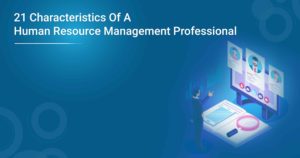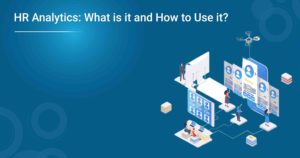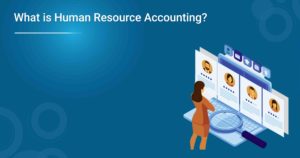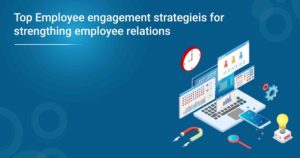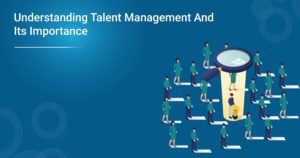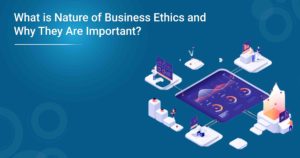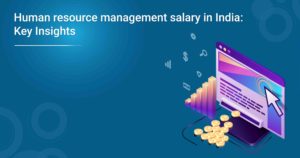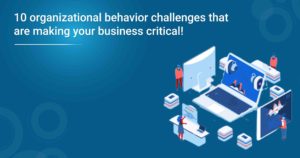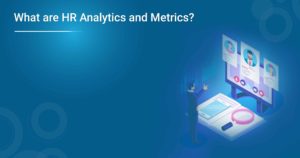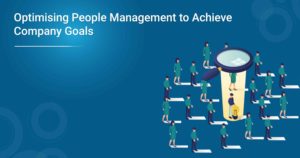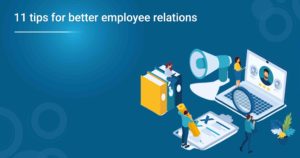There is no doubt that the human workforce of a firm is its most valuable asset. Without them, nothing can progress, and the organisation cannot hope to achieve its business goals. Every decision about the staff of a firm is critical. When the company is hiring, training, promoting or paying its employees, it must make decisions to get the best out of the workforce. Earlier, organisations made decisions based on instinct and intuition. But today, every decision is made using insights received from HR analytics.
If you are wondering what HR analytics is, the best place to learn about it is the Post Graduate Certificate Course In Human Resource Management conducted by a reputable institution. You can learn more about this course from our website. However, we will discuss a few important aspects of this process in this article.
What Is HR Analytics?
Every organisation produces a huge amount of data as part of their regular work. This data contains valuable information that experts can use to analyse and find out the reasons behind various events. The use of such data to arrive at better decisions is called HR analytics. This process is also known by the names talent analytics, people analytics or workforce analytics. Analytics experts analyse the routine data and correlate them with the objectives of the human resource department.
It is more than just improving the existing workforce that HR analytics is used. Companies can also use data available in the job market to find out how to recruit the best people. This process also helps find the most suitable person for a post. The analytics helps determine what HR methods are working well and what are not. Analytics also helps the company discover high-value career paths and leadership candidates. These are the reasons why more organisations are investing in appointing experts in this field and acquiring tools for the process.
Also Read: What is Stakeholder Engagement? Importance, Planning and Implementation
Why Do Organisations Need HR Analytics?
If the companies are churning out a lot of data as part of their routine work, why can’t they use the data as it is instead of investing in an expensive HR analytics process? Unfortunately, such raw data cannot provide any insights to the officials. They need to be organised and analysed to get the necessary information that helps make better decisions. Such data can reveal patterns in employee turnover. It can also tell the company how long it takes to hire recruits. It is also possible to determine the investment needed to get employees to full productivity.
The other important information is about people leaving the company. From the data, it is possible to know which employees are likely to leave within the year. The organisation can also find out if the training provided to the employees is reflecting on their performance. Many businesses are now using HR analytics because they can make decisions based on hard facts, not guesswork. With data-backed evidence, companies can make the necessary improvements and changes to get the full benefit from their workers.
Understanding The HR Analytics Process
It is not enough to understand what HR analytics is. One must also know how the experts carry out the process. This procedure starts with the collection of data.
Data Collection
The first task at hand for the analyst is to collect high-quality data. The data must be easily available and ready for integration into a reporting system. The information can come from internal or external sources like cloud data, mobile devices or even wearable devices. The data-collecting system must be able to sort and organise the data for future analysis. As part of HR analytics, companies collect information about employee profiles, performance, salary and promotion history, demographic data, training, engagement, retention, turnover, etc.
Measurement
At this stage, the data undergoes continuous measurement and comparison, also known as HR metrics. The HR department compares the collected data with historical norms and company standards. This process requires a continuous flow of data. The company must also define the norms beforehand for comparison. Data are compared to find out turnover, absenteeism and recruitment results. With this comparison, you can find areas where optimisation is needed. This HR analytics also helps to find out the effectiveness of the department’s day-to-day activities.
Analysis
At this stage of HR analytics, the experts review the results from metric reporting to discover trends and patterns that can impact the company’s working. Analytical methods like descriptive, predictive and prescriptive are used to arrive at valuable insights. Descriptive analytics helps look at historical data and determine where improvements are needed. In the case of predictive analytics, experts use statistical models to analyse historical data to forecast risks and opportunities in the future. Prescriptive analytics predicts the consequences of forecasted outcomes.
Application
The results of HR analytics are used to make better decisions concerning HR activities. One of the aspects where you can apply the results in reducing the hiring time. If the company finds the reason for the delay in hiring people, it can correct that and ensure that timely recruitment happens. Understanding why people leave the organisation helps to correct that factor. Experts also apply the findings to know why employees go absent for long durations. Finding the reasons helps the company to make the workplace better to improve employee attendance.
You can understand what HR analytics is and its detailed process by enrolling in the Post Graduate Certificate Course In Human Resource Management. You can learn more about the course from our website.
Benefits Of HR Analytics

- HR Management Based On Evidence
The biggest advantage of HR analytics is that it helps the company to manage human resources based on hard evidence. Before the use of this process, the job was done based on trends, biases or temporary solutions. With the introduction of data analysis, HR managers can do their duties with clear insights based on information. HR management based on evidence focuses on making decisions supported by facts from internal data, research findings and real-life experiences.
- Improves Talent Acquisition
Getting good people to work for you is still not an easy job. Finding the right person to fit the organisation is difficult. High attrition rates are affecting companies badly. It is very important to know whom to hire to improve business productivity and reduce turnover rates. HR analytics helps you compare all the skills and other information in new applications with that the capabilities and behaviour of the firm’s top performers. This will help greatly in shortlisting the best candidates from thousands of applicants. This saves a lot of time for the HR officials.
- Assessing Employee Performance And Productivity
HR analytics combined with key performance indicators help the company assess the ROI of all employees. It shows the top performers in the firm and those who may need help to be more productive. Analysing available data provides a better knowledge of motivation, productivity and efficiency and enables employees to improve their performance and contribute to the company’s profits. The analysis of information helps the company to optimise internal processes and streamline employees’ workflows. It results in better performance, collaboration and productivity. HR managers can also find how the workers interact with certain applications and their effect on their work.
- Avoid Pay Disparities And Improve Benefits
The difference in salaries between employees of the same company and with other firms in the same industry is one of the main reasons for prematurely leaving a firm. HR analytics allows companies to understand this disparity and helps them adjust the differences to ensure better employee retention. By analysing historical data, HR officials can also find out the benefits that employees find most valuable. Sometimes it is not the salary but other perks that keep people in a firm. Using the available data will help the company find such facts and compel employees to stay with the firm.
- Better Workforce Planning
Workforce planning doesn’t just happen at the start of an organisation. It is a continuous process as people leave the firm for various reasons. Companies find themselves suddenly having a shortage of staff members to complete all jobs. Such a situation would not arise if they could predict the attrition rates. Using HR analytics companies can find out the attrition rates and plan well ahead for filling those vacancies. They can also look at staff requirements that arise as the company expands and grows. Planning recruitment in advance helps the firm find the most suitable person for the position.
- Understanding Skill Gaps
Every organisation must be sure that people with all the necessary skills are available in the firm at all times. Any shortage in this can greatly affect the company’s performance and prevent the achievement of objectives. Modern HR analytics tools are so advanced that they can identify the existing employees’ gaps in skill and knowledge. You can plot the existing skills on a grid against the essential skills. Analytics also helps companies find out which employees are most suited for upskilling.
- Improve Learning And Development
Once you have understood the skill gaps, it is time to provide training for the employees. Here again, you can use HR analytics to identify the best employee who will benefit the most from training. Such analysis also helps in finding out those who can benefit from on-the-job training and those who need classroom training. Understanding such facts lead to the creation of the most suitable training programmes for different employees. HR officials can also find out the impact of training on the productivity of the individual.
Also Read: What Is Compensation In HRM? Everything You Need To Know
- Reducing Employee Turnover
One of the major problems that most companies suffer from is high employee turnover. With more opportunities available, staff members don’t think twice before leaving an organisation. Using HR analytics, companies can find out why people leave the firm. It can also show which departments have a higher attrition rate and the reasons for it. Knowing such information helps the company to reduce turnover rates. Finding out the reason for people leaving early enables the company to address the issues and improve retention.
- Improving Candidate Experience
Companies found that many candidates leave the recruitment process halfway. This was due to some technical issues in the application process. Finding out the reason can help the firm avoid such incidents and have a better chance of recruiting more suitable people. Identifying the reasons for such abandonment of processes helps companies avoid such situations. HR analytics is an excellent way to dig into old data and find what reasons caused people to leave the application process without completing it. Redressal of such issues results in the company being able to hire better people.
- Identify HR Inefficiencies
HR analytics doesn’t just help find issues in other processes. It also enables HR managers to identify inefficiencies in their departments. Analysing past data can help find ways to improve the performance of the team and get better results out of every member. They can find if there are software programs that will help to make processes faster and more efficient. The analysis will also help the department look at ways of improving their service to the employees resulting in better retention and efficiency.
Now that we know what HR analytics is and how it can be used to enhance the performance of people and the organisation, it is now time to look at how you can make yourself a better HR personnel. The Post Graduate Certificate Course In Human Resource Management is an excellent program to understand more about the analytics process and how it helps you perform better. A visit to our website will enlighten you on the course details.
Conclusion
HR is a vital function as it deals with employees who are instrumental in the performance of an organisation. Improving their efficiency and ensuring that they stay in the company is very important for its progress. Employee retention also saves the company a lot of money that is spent on recruiting replacements. The best way to ensure this is to use modern technologies like analytics to make more accurate, data-driven decisions. All those who aspire to become HR professionals will benefit from equipping themselves with analytical skills.
More Information:
What is Strategic Human Resource Management? Definition and Examples
Breaking Down The Scope Of Human Resource Management








